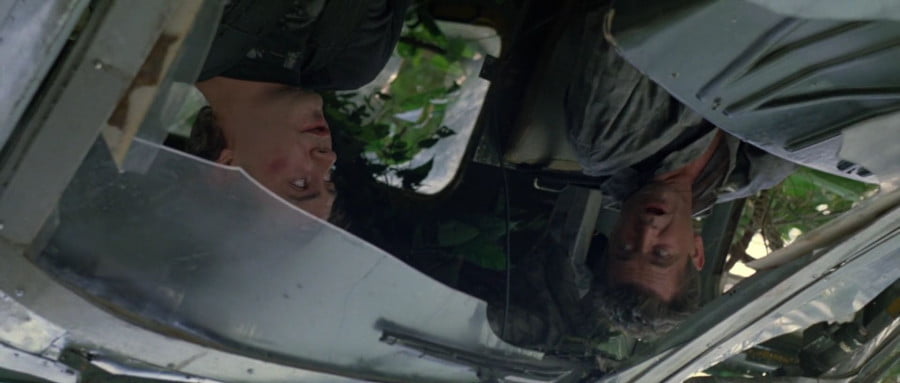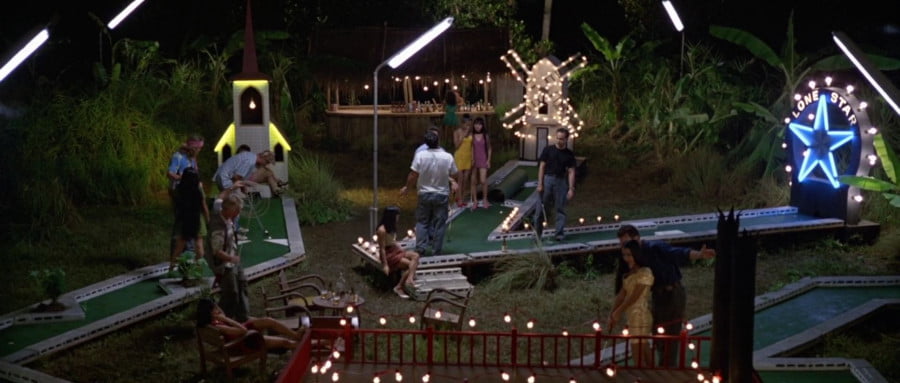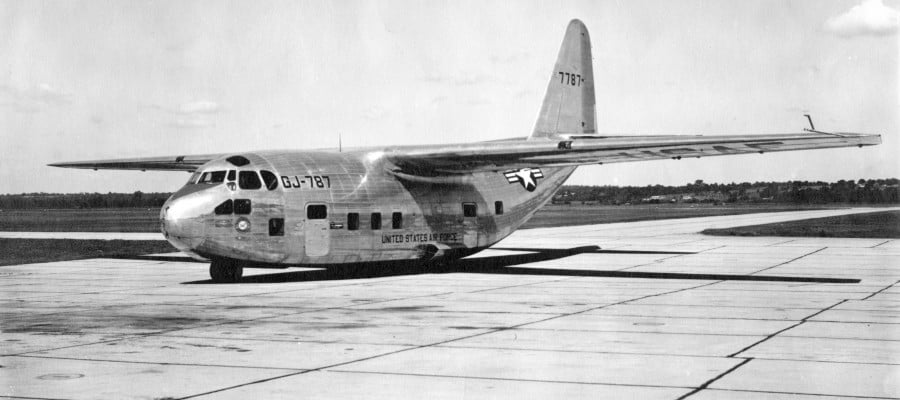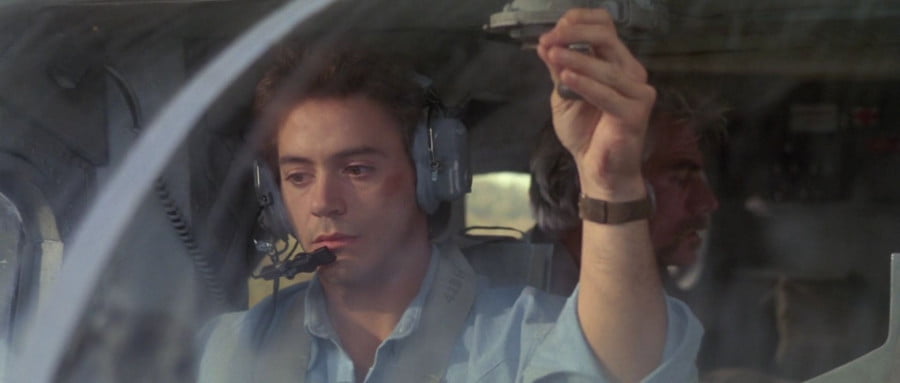You know what the kids are into these days? Political action dramas set in 1960s Laos featuring a terrifying antisemite!
Oh don’t worry about it, this is a movie about a CIA-owned former Taiwanese air company that was used to finance the drug trade under the auspices of the Nixon white house, the fact it’s got Robert Downey Jr in it getting extremely inebriated and Mel Gibson expressing fringe religious ideologies just kind of blends in.

Minor spoilers for Air America follows, but honestly, I don’t plan on digging into the events of the movie, but rather talk about the movie and its framing.
Air America is a 1990 movie accounting a story set during the operations of the historical Air America corporation run by the CIA, operating under the control of a local warlord and former Air Force operatives. While the actual history is more interesting than this movie can encapsulate, I think I kind of communicated nice and clearly to you what the tone of the real-world operation is by saying it was in Laos (ie, South-East Asia) and run by the CIA in the 60s. You’d be shocked to find that Things Weren’t Great.
Don’t get me wrong, this movie is apparently not popular in the area it’s set because a body of the local Hmong population view the general the movie pastiches a lot more favourably than we, people in the collected dominant empire and satellite states might. The actual pilots of Air America, the company, when the place was shuttered, didn’t get compensation or pension despite having been functionally an arm of the US government for waging a proxy war, even the disabled and dead ones. This is probably because the CIA denied they were involved, despite the fact that they very much were.
If this historical contect feels a bit heavy, and likely to create a movie that’s a Big Ole Bummer, good news, it does! But part of how it avoids being a Big Ole Bummer is in framing.

See, the opening six minutes of Air America are cool, and vibrant, and funny and stylish. It is stylish in the way of easygoing, chill pilots playing cool music and cruising through the skies. It’s funny, because you’re watching this very aloof, relaxed manner of doing things from the skies, air-dropping things, and then the impact of it on the ground, watching as ‘care packages’ of flour and grain and seeds smashed into homes of the people who were there to be ‘cared for.’
There’s not a single piece in the opening that feels wasted. You only have like six minutes, in which you need to give the audience a lot of information for the vibe of this movie. But it’s also a cunningly constructed lie.
The opening of Air America is a bunch of jokes, and it’s funny… and the rest of the movie, that goes on from there, is less funny, and less jokes. It’s more absurdities, and the movie you get out of it after that point is largely a political story about people who all suck and are in the wrong place at the wrong time. There’s no real ‘good’ people involved, but there are a lot of worse people, and anything that’s funny tends to be more of a burst of tension rather than an actual joke.
But the end of the movie? The very end?
Bunch of jokes!
Bunch of really good jokes!
And when I sat back to write about this movie after I watched it, I considered how I was going to talk about it, and how that initial opening was so funny and the ending was funny and then there was also that funny… bit… that… wasn’t in the middle…
Wait what’s that?

by god that’s Miss Nixie’s music!
See I thought ‘hey, I should check with Nixie if there’s anything interesting about these planes,’ and
well
this happened:
The Pilatus Porters are indeed freaky little airplanes but I don’t have any context as to whether or not they were actually prohibited in the US by the FAA at that time, it sounds like something they made up for the movie but I have no idea. It’s a small and slow civilian Swiss airplane introduced in the late 50s as a go-anywhere machine; very good for rough-field landings, and therefore indeed popular for secret squirrel special forces bullshit. They were originally designed and built with piston engines but the ones shown in the movie are, correct for the period, gas turbine versions, making them more advanced than the big cargo planes in some ways. The C-123 Provider is a strange airplane in that it was originally developed post-WWII as a glider, which might seem like a deranged statement if you don’t know that towed cargo gliders were a whole thing for troop deployment in western Europe in WWII; cheaper to build, you don’t waste an engine on it, single-use only so it doesn’t matter how much damage it takes, and gets your people and their equipment on the ground faster and safer and slightly sneakier than dropping by parachute. But this thing was an early jet-age development and looks it in the (at the time) sleek looking all-metal construction, so it was a weirdly expensive glider, and also the USAF was like “um? We don’t really need those anymore?” And Fairchild Aircraft was like no problem, it’s built strong enough we can just stick engines on it and now it’s a normal self-powered cargo plane. And in that way, I think, Fairchild kind of accidentally created the first modern cargo plane in form factor of having the wide, flat-bottom fuselage sitting low to the ground and the drive-on ramp under the tail, which is the form factor we still use for basically all tactical cargo planes today. At least I can’t think of any earlier examples of that sort of design.

And being early jet age, it was introduced at a time when jet engines were now the Big Thing and were finally getting in major mass production and widespread service, but it’s important to understand the context that jet engines at the time fell under “the future is already here, it just isn’t evenly distributed.” Jet engines were expensive, and they were for fast planes, so they went first to fighters and bombers. Utilitarian aircraft continued to be built with piston engines, since the production and logistical support for those already existed in massive scale, given That War We Just Had; they weren’t considered obsolete for a long time, and while turbine powered cargo planes like the Lockheed Hercules did exist by the time that movie is set to take place, piston engine transport aircraft were still in civilian and military use in massive numbers through almost the entire Vietnam war, C-123 included. So jet age construction, revolutionary design, but with old engines, it kind of exists in this odd liminal state of 50s technology. But the later model Providers used in the movie (again, period correct) actually did have small jet engines haphazardly bolted on to improve their takeoff performance; they’re the little pods that hang low under the wings, outboard of the main engines, that look like they have weird little mouth doors on the front, because they do because they’re jet engines.
This movie made me fall in love with the C-123, but also, I would never set foot in one unless I knew its exact provenance. Piston engine cargo planes in Vietnam were used for all kinds of unglamorous tasks which the USAF didn’t want to occupy their sexy new Hercules airlifters with, including the spraying of herbicides to destroy Vietnam’s jungle foliage and deprive the enemy of cover (and which was a horrific crime against humanity in its knock-on effects, even outside standard deviation for war being hell.) The Providers surplused after the war proved to be basically impossible to decontaminate, and no one at the time cared much or tried very hard anyway. And so, since this is also the model of plane used in cinematic masterpiece Con Air, there is a very tiny but nonzero chance that RDJ, Mel Gibson, and/or Nic Cage may eventually die of health complications caused by exposure to Agent Orange.

… ahem
Huh.
Okay, that was a thing.
I really liked this movie, and I really liked a bunch of stuff around the characters. I liked the way the planes were represented, and I liked the ways that some of the features of Laos are presented. Like, the mountainous regions and the heavy clouds that feature into almost all the images I’ve ever seen presented of the region in tourism media, that sort of vision of ‘this is something striking about us we want you to see.’ The way that the Americans are making things out of the trash they brought with them. The weird planes that are made for very specific jobs and pointedly, not for other kinds of jobs. The way that the land was covered in all these little handmarks of a history of Other People Coming In And Trying To Take All The Pies.
I liked this movie well enough, but when I’m done with the movie, the actual sequence of events is just kind ‘yeah that stuff happened, a lot.’ What the movie brings to that story, the thing that I carry with me, is how interesting it is that this is a movie that opens and closes with a joke almost like it’s trying to make you feel a bit better about the way it just punched you in the mouth. I mean, I checked it out because a friend cares about it, and that led to learning a far more interesting story about how the bunny in Con Air might actually literally be a cursed object that kills someone beyond the Homestuck canon.
2 Trackbacks